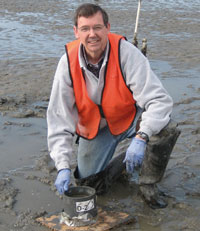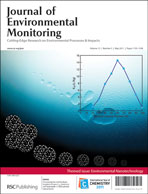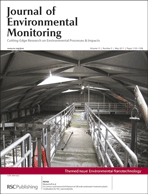Richard Luthy is the Silas H Palmer professor of civil and environmental engineering at Stanford University, US. His interests include water quality and water reuse for ecosystem and human requirements
What inspired you to become an environmental scientist?
From an early age, I was influenced by my father who gave me gifts that inspired my curiosity. At one time, I had a gigantic chemistry set and used to do the experiments in the garage. I later went on to study chemical engineering. In the late 1960s, there was a race to the moon and a race to the bottom of the ocean. Jacques Cousteau was very active then and, almost on a whim, I decided I wanted to study ocean engineering. At that time, the Vietnam War had started – I was advised that it was better to volunteer than be drafted, so I volunteered for the navy civil engineer corps and became a deep sea diver leading a team in underwater construction. By the early 1970s, the US Environmental Protection Agency was founded and the Clean Water Act was passed. Around this time, I read Rachel Carson’s book about the dichlorodiphenyltrichloroethane – or DDT – problem, Silent Spring. Being in the military gave me time to think about my future and environmental issues and I decided that on leaving the navy, I would do a PhD in environmental engineering.
What’s your main focus?
I’ve always had an interest in physical chemical processes and in trying to understand what mechanisms are at work in environmental systems such as sediments and wetlands. Everything is connected in natural systems – some connections are more important than others and we need to try to quantify these. The use of modelling can then enable you to make predictions about the system. My work is focused particularly on water quality.
What’s the most exciting thing about the work you do?
I enjoy working with colleagues from other disciplines, including biology and the social sciences. We’re looking at how to manage contaminants in sediments and I’ve learned a lot about aquatic biology, which you need to understand as well as how compounds are taken up and how we can control the availability of contaminants in sediments. Better management and use of our water resources are two of the most important problems in the western United States. It has been exciting partnering with excellent colleagues in the various disciplines and by working together, we have been able to put forward proposals to address the challenges ahead.
What’s the next big challenge?
In California, the water infrastructure is old, fragile and needs replacement. Back in the 1950s, we pumped water all over the place but now we’ve got to think about energy costs and the competing needs of agriculture and other human activities. Of course, part of the solution will come from technology that requires less energy. We are also thinking more about ecosystems. For example, the issue is no longer about not killing fish with discharge from wastewater treatment plants, we now have to consider how to leave the fish with enough water to live in. Ecosystems have an equal claim to water as industry and agriculture and we have to find a way of satisfying these competing claims.
There are issues with regard to management and institutions. In California, there are around 500 different major water suppliers, each with their own pricing structure. That makes it difficult to introduce a new water process or system since you have to discuss the changes with all those different bodies. Also, we view groundwater as a separate entity to surface water, but they’re connected. Having one set of laws that govern groundwater and another set for surface water makes the management of both resources much more difficult. Financial costs are the biggest hurdle in introducing improvements in water reuse, so it’s important to have business models that help us recover these costs.
Another issue is how we deal with climate change and risk in the future. There are risks from natural phenomena and from intentional acts and in the end you want a system that is robust and resilient. In the field of water quality and supply, we can either do things differently or just keep muddling along. Human society needs water and changes will happen anyway in how we maintain our water supplies, but ideally you like that change to happen in a way that is well planned, cost effective and serves the various needs I’ve described.
To read more see the Chemistry World story.
Articles of interest:
New methods to monitor emerging chemicals in the drinking water production chain
Annemarie van Wezel, Margreet Mons and Wouter van Delft, J. Environ. Monit., 2010, 12, 80
DOI: 10.1039/b912979k
Implementation of E.U. Water Framework Directive: source assessment of metallic substances at catchment levels
Ho-Sik Chon, Dieudonne-Guy Ohandja and Nikolaos Voulvoulis, J. Environ. Monit., 2010, 12, 36
DOI: 10.1039/b907851g
Fate and removal of estrogens in municipal wastewater
LeeAnn Racz and Ramesh K. Goel, J. Environ. Monit., 2010, 12, 58
DOI: 10.1039/b917298j
Comments Off on An interview with Richard Luthy











 Assessing exposure is an important aspect of complying with the EU
Assessing exposure is an important aspect of complying with the EU  Andrea Tapparo and colleagues at the University of Padua, Italy, have developed a fast method for analysing neonicotinoid insecticides using UHPLC-DAD. The method was used to analyse the insecticide content of guttation drops on corn seedlings. Guttation is the formation of xylem droplets on leaves – often confused with dew – and has recently been proposed as a mechanism for the exposure of detrimental doses of insecticide to honey bee populations.
Andrea Tapparo and colleagues at the University of Padua, Italy, have developed a fast method for analysing neonicotinoid insecticides using UHPLC-DAD. The method was used to analyse the insecticide content of guttation drops on corn seedlings. Guttation is the formation of xylem droplets on leaves – often confused with dew – and has recently been proposed as a mechanism for the exposure of detrimental doses of insecticide to honey bee populations. Understanding the impact of long term human exposure to organic contaminants in the Arctic as a result of global climate change is no mean feat – we barely understand the complicated Northern ecosystem as it is. This comprehensive review from James Armitage and colleagues at the
Understanding the impact of long term human exposure to organic contaminants in the Arctic as a result of global climate change is no mean feat – we barely understand the complicated Northern ecosystem as it is. This comprehensive review from James Armitage and colleagues at the 
 Our latest issue is a collection of articles on the theme of
Our latest issue is a collection of articles on the theme of  The
The